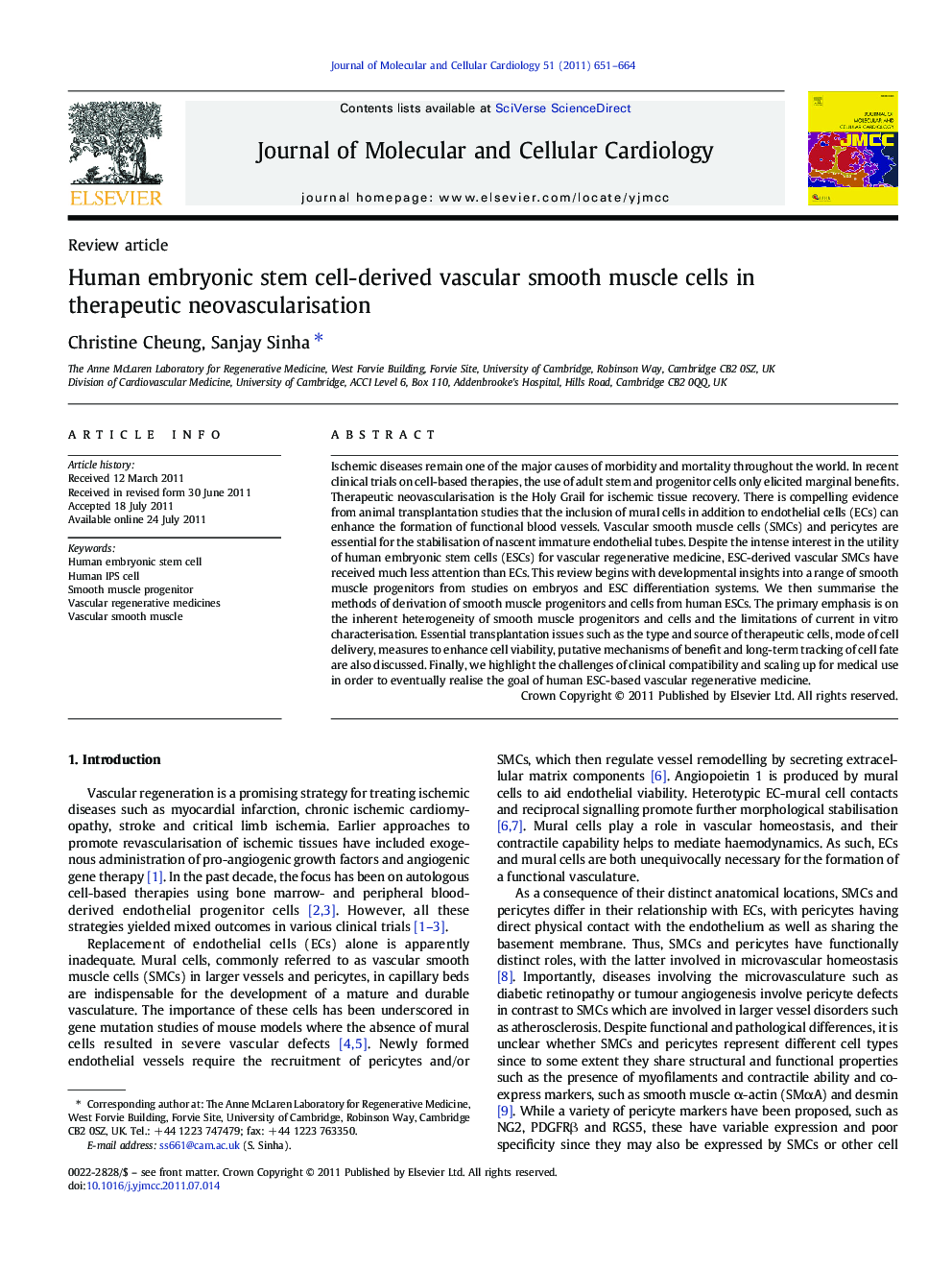| Article ID | Journal | Published Year | Pages | File Type |
|---|---|---|---|---|
| 2190739 | Journal of Molecular and Cellular Cardiology | 2011 | 14 Pages |
Ischemic diseases remain one of the major causes of morbidity and mortality throughout the world. In recent clinical trials on cell-based therapies, the use of adult stem and progenitor cells only elicited marginal benefits. Therapeutic neovascularisation is the Holy Grail for ischemic tissue recovery. There is compelling evidence from animal transplantation studies that the inclusion of mural cells in addition to endothelial cells (ECs) can enhance the formation of functional blood vessels. Vascular smooth muscle cells (SMCs) and pericytes are essential for the stabilisation of nascent immature endothelial tubes. Despite the intense interest in the utility of human embryonic stem cells (ESCs) for vascular regenerative medicine, ESC-derived vascular SMCs have received much less attention than ECs. This review begins with developmental insights into a range of smooth muscle progenitors from studies on embryos and ESC differentiation systems. We then summarise the methods of derivation of smooth muscle progenitors and cells from human ESCs. The primary emphasis is on the inherent heterogeneity of smooth muscle progenitors and cells and the limitations of current in vitro characterisation. Essential transplantation issues such as the type and source of therapeutic cells, mode of cell delivery, measures to enhance cell viability, putative mechanisms of benefit and long-term tracking of cell fate are also discussed. Finally, we highlight the challenges of clinical compatibility and scaling up for medical use in order to eventually realise the goal of human ESC-based vascular regenerative medicine.
► Transplanted mural cells enhance blood vessel formation. ► Developmental insights into embryonic stem cell-derived smooth muscle. ► Smooth muscle derivation methods with emphasis on heterogeneity. ► Transplant issues such as mechanisms of benefit, cell type, source, viability and tracking. ► Challenges of clinical compatibility and scaling up for medical use.
